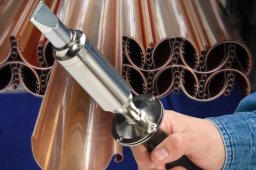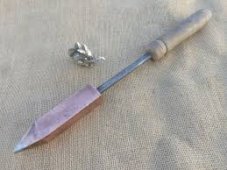I've heard this debate for nearly 50 years, and for 50 years I've seen with my own eyes what happens to electrical connections Vs. structural connections getting confused...
I've been off grid for over 30 years, and that long building industal machines.
Small barrel type crimp terminals will benifit 100% of the time from crimp AND silver bearing electrical solder (low temp melt point).
The raw copper ends of the wire stick through the barrel, raw copper exposed when stripped to attach the terminal end...
You CAN NOT squeeze a small barrel terminal enough to bond the copper to the terminal. Both are too thin, not enough mass, you will simply mash the copper enough to squish out (become plastic) out of the crimp tool.
Thermal cycling (expansion/contraction) will loosen the barrel of the terminal on the wire 100% of the time.
The ONLY way to permanently ELECTRICALLY bond the wire to the terminal is proper silver bearing solder.
The high vibration/aircraft application argument doesn't fly for this application. Wiring harness in commercial aircraft are ROUTINELY REPLACED.
YOU will never be working with 400 cycle AC current. YOUR wiring will never have to survive a lightening strike while airborne... Use your heads about application...
Your solar system isn't using 17,000 volt surge rated wire with fireproof teflon insulation, you won't be using a precisely fitting crimp tool, and your crimp tool will never be inspected on gaging equipment, checked for precise application of force, ect.
Even if it were the proper aircraft certified tool, and you were educated to use it correctly, you ARE NOT using precisely sized, specific alloy wire that tool requires, or the specific alloy, specific sized terminals the tool requires to make proper aircraft authorized connections.
Use copper terminals on copper wire, give them a good mechanical crimp that DOESN'T unduely stress/distort the terminal improperly, then cover the air gaps that WILL happen with silver bearing solder, use your own heat shrink for environmental protection.
Different lugs, tools and rules for heavy LUGS (not little terminals) and heavy copper conductors.
There is enough mass for a heavy bonding mechanical crimp with Lugs & Cables.
That crimp DOES NOT negate the air space/bare copper issues that silver bearing solder or actual silver solder solves.
Tinning exposed copper is environmental protection. The silver makes formally air spaces into conductive connections. Silver is MORE CONDUCTIVE than the copper, so it's a common sense thing.
This IS NOT an either/or question. Mechanical crimp, then solder, both, not either/or.
Nothing beats silver solder (high temp) or silver bearing electrical solder (low temp) to close up air gaps, protect copper, make better electrical connection.
Solder is in NO WAY a replacment for mechanical compression (crimp).
A solder joint CAN overheat, that will both damage the solder, and potentially let the wire/cable LOOSEN in the connection.
Mechanical connection, THEN solder for filling in air spaces, increase conductivity, and seal out oxygen/moisture (corrosives).
Don't treat it like an 'Either/Or' thing. Air in a bald tire doesn't mean the tire is 'Good'...




